AlSat-2B
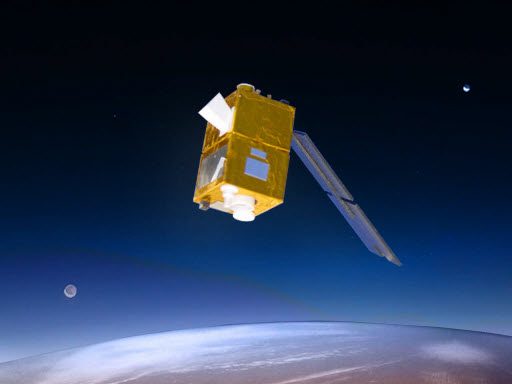
AlSat-2B – Algeria Satellite 2B – is the second of two AlSat-2 satellites in an optical Earth observation project of the Algerian National Space Technology Centre (CNTS).
In 2006, CNTS signed an agreement with EADS Astrium (now Airbus Defence and Space) to build the two satellites. Per the agreement, the first satellite, was integrated in France and launched atop an Indian PSLV rocket in 2010, while the second satellite was assembled in Algeria at the Satellite Development Center.
The project also includes the construction of a pair of ground stations in Algeria to enable autonomous operation of the satellites. Intensive training was given to Algerian engineers to learn about the design and operation of the satellites.
The AlSat-2 satellites deliver high-quality imagery used in different applications by the Algerian government: cartography, agricultural management, resource management, environmental monitoring, and disaster response.
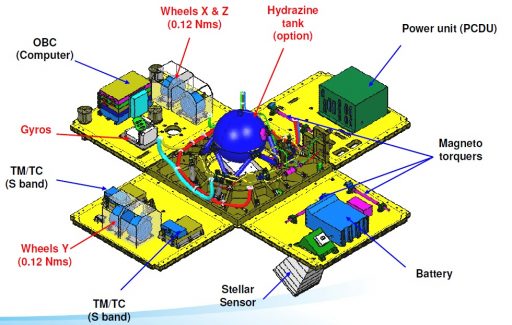
AlSat-2B is based on the AstroBus-100 satellite platform that is part of a family of satellite buses covering a Low Earth Orbit mission range from 125 to 4,000 Kilograms. The AstroBus satellites are built to share a number of common avionics components to streamline the production line and reduce overall cost. The small AstroBus-100 is the extension of the AstroBus line to the lowest size range with evolutions through Airbus developments as well as the Myriade platform originally developed by the French Space Agency CNES for very lightweight satellite missions
The 116-Kilogram AlSat-2B satellite is 0.6 by 0.6 by 1.0 meters in size and makes use of a box-shaped bus structure using external panels made of composite panels which host the various internal and external satellite subsystem components. The nadir panel of the satellite hosts the propellant tank and launch vehicle interface while the zenith panels builds the interface with the NAOMI imaging payload.
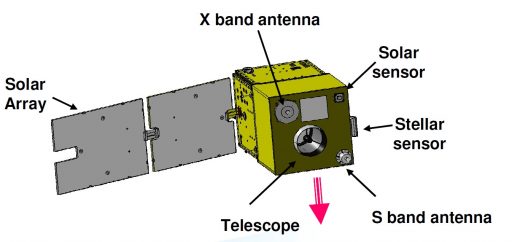
The satellite hosts a single two-panel solar array featuring Gallium-Arsenide Solar Cells to deliver an end-of-life power of 180 Watts, fed to a 15 Amp-hour battery. Three-axis stabilization of the spacecraft is accomplished with a number of attitude sensors and actuators.
Attitude Determination is provided by a Star Tracker that captures images of the space-facing side to use bright stars as reference for the precise calculation of the satellite’s three-axis orientation in space. A three-axis magnetometer gathers data on the magnetic field to provide information needed for the actuation of the magnetic torque rods. Body rates are measured by an Inertial Measurement Unit for use in the initial de-tumble and during maneuvers. Three sun sensors come into play in satellite safe mode to keep the solar panel pointed to the solar vector for power generation.
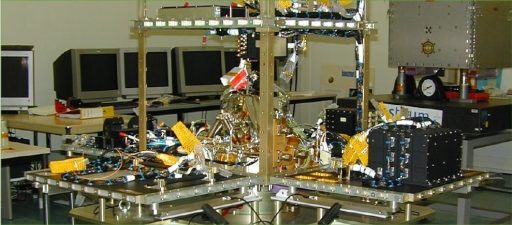
Attitude Actuation is provided by four 0.12Nms reaction wheels installed in two reaction wheel assemblies. Three magnetic torquers are required for reaction wheel momentum dumps and during satellite safe mode. Attitude control on the spacecraft is sufficiently precise for pointing the satellite to the correct sector on the ground that is to be imaged.
AlSat-2B hosts a Hydrazine monopropellant propulsion system fed from a 4.7-Kilogram tank and using four one-Newton thrusters. The system has a total delta-v budget of around 65 meters for orbit maintenance over the course of the operational mission. The 1N thrusters thrusters can tolerate supply pressures of 5.5 to 23 bars to generate a thrust of 0.36 to 1.45 Newtons. The corresponding specific impulses are 205 seconds at the lowest supply pressure and 221 seconds at the highest pressure. Each thruster assembly weighs about 0.23 Kilograms and can be operated in steady-state mode and pulse mode for attitude control.
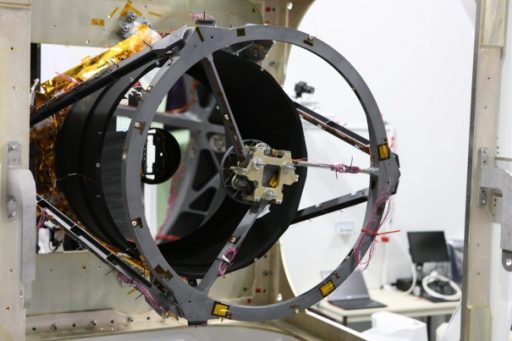
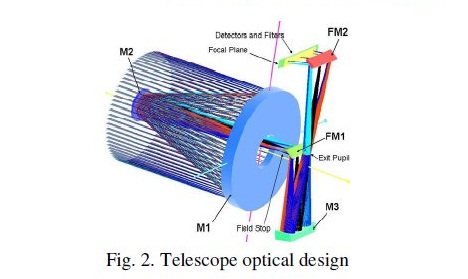
AlSat-2B employs a central onboard computer known as T805 with a built in EEPROM of 8Mbit and a 1Gbit of DRAM. A 79GBit Solid State Recorder is used for payload data storage ahead of downlink using a 60Mbit/s X-Band terminal. A pair of S-Band transceivers is used for telemetry downlink and command uplink at data rates between 20 and 384 kbit/s.
The main payload of the AlSat-2B spacecraft is the NAOMI optical imager. The New AstroSat Optical Modular Instrument has extensive flight heritage having flown on the KazEOSat-1, SPOT-6 & 7, SSOT and VNREDSat-1A satellites. The instrument weighs 150 Kilograms and has a peak power demand of 180 Watts.
The instrument is a high-resolution pushbroom-type imager that was developed by EADS Astrium and SAS. NAOMI is comprised of an optical bench consisting of SiC to provide extremely high thermal stability, a focal plane assembly with Time Delay Integration Detector, back-end electronics for data processing and interfaces for data and command exchange with the spacecraft computer.
The telescope uses a Korsch combination with three aspheric mirrors and two folding mirrors using an aperture diameter of 20 centimeters. This design was chosen because of its simplicity and compact size – fitting within the small spacecraft platform. An entrance baffle is used for stray light rejection. Light entering the detector is passed from the primary mirror M1 onto the M2 mirror before passing Folding Mirror 1 to the M3 mirror that reflects the light through the Exit Pupil to Folding Mirror 2 that passes the light onto the detector.
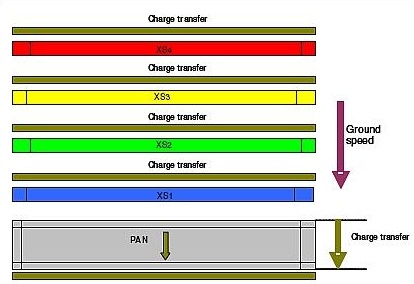
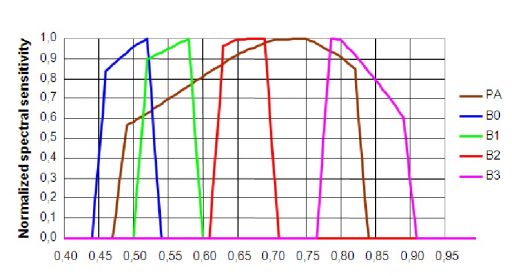
The Time Delay Integration detector uses a silicon CCD detector assembly with 7000 pixels for the panchromatic channel and four lines of 1750 pixels for the multispectral bands. All detectors are equipped with strip filters and front end electronics. The front end electronics provide the detectors with biasing and clocking signals as well as pre-amplification of the signals before transmitting them to the video electronics.
The back-end electronics provide power supplies for the operation of the front-end and provide data processing via modular video chains that operate at frequencies of up to 15Msamples/sec. The signals from the front end is digitally converted in the back end using a 12-bit conversion scheme and the data is then transferred for real-time processing and storage in the mass memory.
The instrument covers five bands – the panchromatic band of 450 to 750 nanometers and four multispectral bands including blue (450-520nm), green (530-600nm), red (620-690nm) and near infrared (760-890nm). The telescope covers a ground swath of 20 Kilometers and the spacecraft has a field of regard of +/-35 degrees (800km) as it is tilted around nadir for event monitoring. NAOMI on AlSat-2B can deliver panchromatic images at a ground resolution of two meters at nadir while the multispectral imagery will reach resolutions of eight meters.
